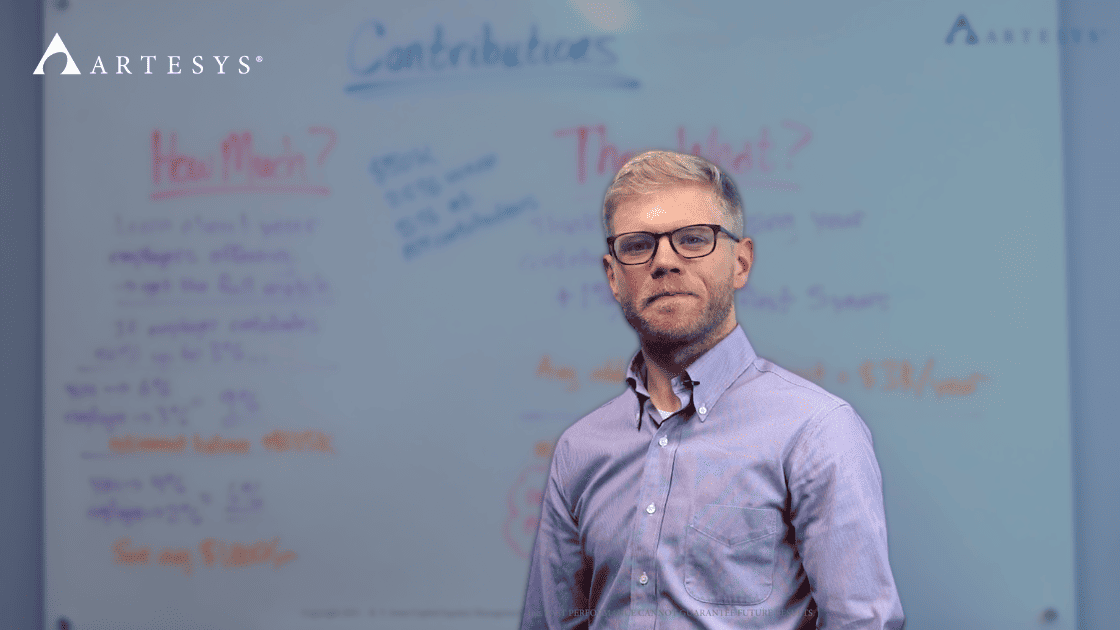Investment Education 101: Recap from Spencer Seggebruch

At Artesys, we are proud to employ industry experts to help advise our clients and provide educational opportunities as well. Our financial professionals are here around the clock to help you achieve your financial goals through investing in your future.
One way we love to educate the public is through our YouTube series that answers commonly asked questions we receive from those we work closely with. Let’s dive into a recap of a few of those videos from Spencer Seggebruch:
Portfolio Diversification: What is it? Why does it exist? How does it work?
Portfolio Diversification: What is it? Why does it exist? How does it work?
The “What”: We can manage the impact of volatility on your portfolio to a level you’re comfortable with. This depends on the amount of time you have left before retirement (time horizon) and your attitude towards risk. At Artesys, we have our new clients complete a risk questionnaire to gauge the level they are comfortable with.
The “Why”: Individuals have different goals and risk tolerances. Assets have risks including market, liquidity, credit, inflation, and political risks. These risks can be mitigated by combining assets to offset risks and optimizing the risk/return profile.
The “How”: We use math and research to combine assets that are not highly correlated to reduce volatility in a portfolio. If you are looking at stocks, you can diversify by combining different sizes, ratios, industries, or region the company is in. If you are looking at a brokerage account you can diversify between assets such as stocks, bonds, cash, real estate, etc.
How often should you re-assess your investment portfolio?
How often should you re-assess your investment portfolio? | with Spencer Seggebruch
A common question we get at Artesys is, “How often should I re-assess my portfolio?”. The truth is, there is no one-size-fits-all answer. Start by asking yourself the following questions:
- Have your goals changed?
- Has your financial situation changed?
- Has nothing changed?
These changes may include life events, such as: getting married, changing jobs, (or winning the lottery)! If none of these changes have occurred, you should not feel like you have to make changes to your portfolio. It is perfectly alright to not update your portfolio if every factor has remained the same. If you do decide to make changes to the risk level in your portfolio, we make it easy to do so. Just reach out to a financial professional at Artesys and we can help make updates.
Challenges Now for Retirees vs Earlier Generations
Challenges Now for Retirees vs Earlier Generations | with Spencer Seggebruch
There are a few unique challenges for retirees now that earlier generations may not have faced. One unique challenge we are seeing is the average life expectancy. The average American now lives past the age of 81, so on average, your retirement savings will need to last you 16 years. This, in turn, means you will now need to save more money than older generations.
Another challenge is the way fixed-income portfolios are managed. Fixed-income products like bonds have been the go-to for low-risk income-generating alternatives. This product used to only be available to high-net-worth individuals or institutional investors. Nowadays, more people have access to bond optimization and can manage a portfolio according to their needs.
Lastly, today we have a lot more defined contribution plans and less defined benefit plans. More control is given to the investor. Instead of the company assuming more of the financial risk, they are taking on more educational risk. This can be a challenge to investors if their financial plan is not offering quality educational opportunities for participants.
Does the Market Cycle Matter in Retirement Investing?
Does the Market Cycle Matter in Retirement Investing? | with Spencer Seggebruch
In traditional finance, we have four phases in the market cycle: Accumulation, Mark-Up, Distribution, and Mark-Down. A cycle is a period between consecutive highs and consecutive lows. The timing between cycles can vary dramatically depending on the type of investor. A day trader may see a market cycle every 20 minutes, while a real estate investor sees a market cycle every couple of decades.
In a perfect world, you would only buy during the accumulation phase and sell during the distribution phase. However, it is nearly impossible to determine what phase the market is in since we cannot predict the future. Most people contributing to retirement accounts do so on a regular basis, thus investing during every market cycle phase. By doing so, you are effectively getting an average over these phases.
So the question is, does it matter what phase of the market cycle we are in? The short answer is, no. By continuing to save no matter what phase we are in, you are going to have a larger impact on your account in the long run.
Stay tuned for more investment education…
We support investors with the insight and strategy they need to help meet their goals. Bring our expertise, the latest science, and a deep understanding of historical performance to your investing. Make retirement truly yours.
We have new videos every quarter. Subscribe here.


